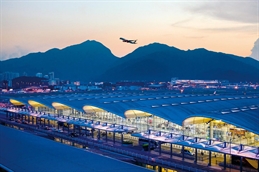
Asia Pacific regions are contributing over 50% of worldwide air cargo growth, with the region's manufacturing dominance continuing to power global tonnage increases.
According to an analysis by WorldACD Market Data, Asia Pacific origin markets are continuing to contribute an outsize share of worldwide air cargo growth this year, generating more than half (56%) of the global 12% year-on-year (YoY) increase in tonnages in the first 10 months of 2024.
The region's strong contribution this year means Asia Pacific's share of worldwide outbound tonnages overall has risen two percentage points to 41% from 39% last year, well ahead of Europe at 24%, Central & South America on 14%, Middle East & South Asia (MESA) with 9% of global volumes, and North America's 8% market share.
Africa's share of both outbound and inbound air cargo traffic remained stable at 4%.
WorldACD noted that after origin Asia Pacific with its 56% share of global tonnage growth this year, Europe came in as the second origin region, accounting for a much lower 17% of global tonnage growth.
But, the air cargo market data provider noted that the buoyant MESA region contributed 14% of outbound tonnage growth this year, despite its smaller 9% share of global volumes, bolstered by traffic shifting to air this year due to continuing disruptions to the region's ocean freight markets.

Vulnerables/high-tech dominates special cargo growth
Within Asia Pacific's 56% share of worldwide growth in the year to date (YTD) to the end of October, general cargo contributed almost two-thirds (64%), boosted by large volumes of e-commerce traffic flying consolidated as general cargo, while special cargo generated 36%.
WorldACD noted that the special cargo element was dominated by the vulnerable/high-tech product category, which accounted for around 80% of growth in special cargo.
Among the top 5 individual airport or city origin growth markets, the world's busiest air cargo gateway, Hong Kong, also remained the biggest single generator of YoY outbound growth in October, as it has for much of this year.
WorldACD said Hong Kong's 15% YoY tonnage increase generated around twice the growth in absolute chargeable weight of second-placed Miami, even though the latter had recorded 31% YoY growth compared with its tonnages in October last year. Dubai was the third-biggest outbound growth market, thanks to its 45% YoY increase in October, closely followed by Shanghai and Tokyo.
Special cargo drives Hong Kong outbound increase
WorldACD said for Hong Kong, all of that growth in October was generated by special cargo, predominantly vulnerables/high-tech, with general cargo recording a slight YoY fall in chargeable weight.
Miami's growth was balanced between general cargo and special cargo, whereas Dubai, Shanghai, and Tokyo's growth came mainly from general cargo.

Meanwhile, Dubai topped the list of October's top 5 inbound YoY growth markets, thanks to a 19% increase, closely followed by Frankfurt, New York, Singapore and Miami.
For all five, WorldACD noted that growth was led by general cargo, with special cargo making up around one-quarter to one-third of the growth led by vulnerables/high-tech for all except New York, where temperature-controlled (predominantly pharma) shipments were the biggest special cargo import growth category.
The top 5 YoY decreases in inbound tonnages were recorded in Teheran, Beirut, Beijing, Dhaka, and Zaragoza, with Teheran's and Beirut's inbound tonnages almost completely wiped out: tonnages at both airports were down by 96%, YoY, in October, as most commercial flights to and from Iran and Lebanon were suspended last month.
Dhaka, Beirut and Zaragoza — affected by political unrest, conflict, and flooding, respectively — also featured in the top 5 markets posting the biggest outbound decreases in October, followed by China's Qingdao and Mexico’s Guadalajara.



